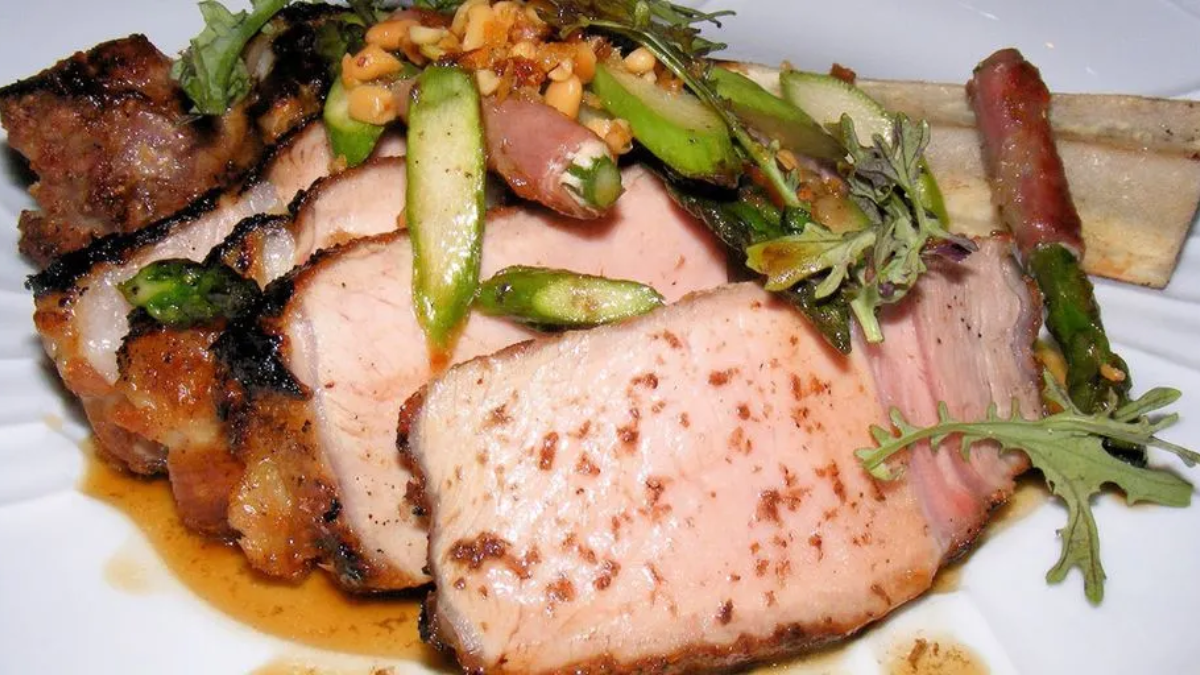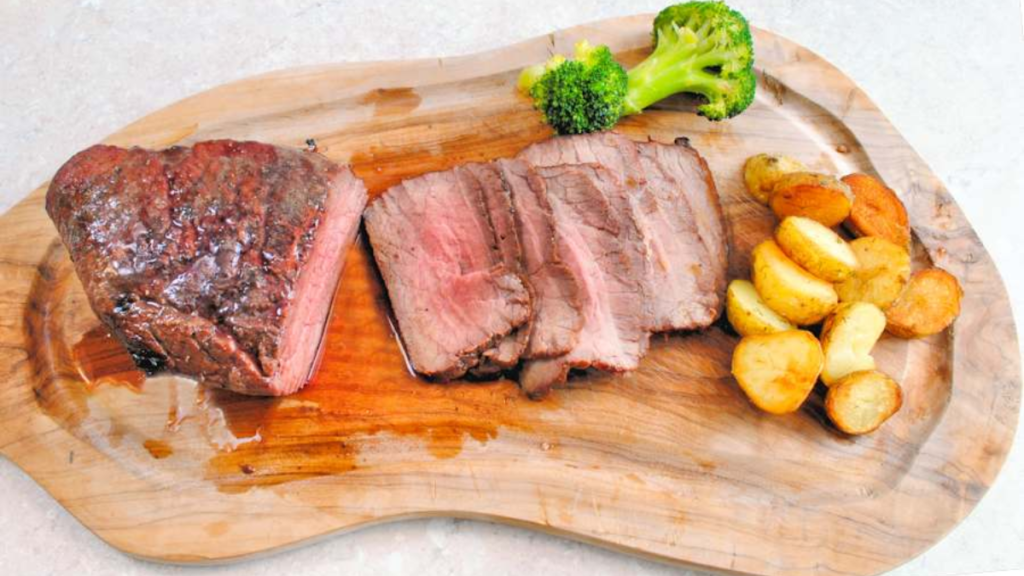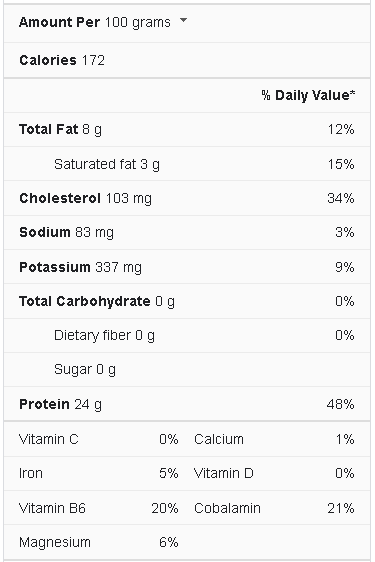Unsure how to prepare veal? We are here to help you out in preparing veal. It is simple to prepare and should be included in your weekly menu. Depending on the cut, veal can be pan-seared, grilled, sautéed, broiled, or stewed. Select the appropriate cooking method for the veal cut and keep in mind: do not overcook this lean meat. To know how to cook veal, read further.
If you want meat that is both lean and soft, veal is a terrific choice. It has a wide range of applications and can be used in several recipes. Choose from a variety of cuts and choose humanely raised veal. Try breaded veal scallops for a fantastic meal, or grill or braise your meat for great results.
Veal Nutrition Facts
Veal
It is the meat of a younger dairy breed, dairy crossbreed, or beef breed animal. Dairy and dairy crossbreed calves are removed from their mothers and grown out on specialized rearing sites if produced for veal, but beef breed calves are kept with their mothers and separated later.
In contrast to the beef from older animals, veal is the meat of calves. It can be generated by any calf of any gender or breed; however, most veal is produced by young male dairy calves that are not utilized for breeding. Veal is generally more expensive per pound than beef from older cattle. Veal production is a means to add value to dairy bull calves while also using whey solids, a byproduct of cheese production.
How to Procure It?
Veal flesh has a long history dating back to ancient Rome. According to the Romans, the best veal meat is pale pink to light grayish pink in color. Veal production is contentious since it is thought to be cruel to animals, and it’s not pretty how the animals are treated and transported before being slaughtered.
Because it does not lactate, the male calf is more suited for veal. This way, dairy products from cattle will not be harmed due to veal production. The animals used to produce veal are frequently reared in cramped quarters or crates to make the meat redder and harder. You can inquire at butcher shops or get it online if you need veal.
How to Cook Veal?
Veal shanks and cutlets, the two most prevalent cuts of veal, can be prepared in various ways, including grilling, pan-frying, and broiling. But there are few things easier than baking veal in the oven. Baking veal in the oven helps keep the meat’s natural flavor while maintaining its texture.
Ingredients
- Two tablespoons of Filippo Berio extra-virgin olive oil
- Two tablespoons butter
- One medium red sweet onion, peeled and thinly sliced
- One medium leek top was removed, washed, and thinly sliced
- 1/4 cup balsamic vinegar
- 1/2 pound button mushrooms, wiped clean and thinly sliced
- Five carrots were scraped and cut into 1-inch pieces
- 2 1/2 pounds veal shoulder chops, wiped dry
- 1/2 teaspoon of acceptable sea salt
- Grinding coarse black pepper
- 1 cup dry white wine
- One tablespoon of finely minced rosemary
Directions
- Heat 1 tablespoon of the olive oil and one tablespoon of the butter in an ovenproof sauté pan. Stir in the onions and leeks and cook the mixture over medium heat until the onions and leeks are wilted. Raise the heat high, stir in the balsamic vinegar, and cook, occasionally stirring, until the vinegar evaporates. Remove the onions and leeks to a dish and set aside.
- Add the remaining olive oil and butter to the pan, stir in the mushrooms and cook them until all their liquid has been given off. Remove the mushrooms to the dish with the leeks and onions.
- Preheat the oven to 225ºF.
- Dry the meat well on both sides with paper towels and add the pieces in a single layer to the pan; brown them nicely on both sides. Sprinkle the meat with salt and pepper. Return the onion mixture to the pan and add the carrots. Slowly pour in the wine along the side of the pan. Cover the pan tightly and transfer it to the oven.
- Cook for about 1 1/4 hours, or until the meat is fork-tender. Ten minutes before the dish is done, sprinkle the rosemary over the top of the meat. Cut the meat into serving pieces; transfer the mixture with the juices to a serving platter and serve immediately.
General Tips on Cooking Veal
It can be cooked in two ways: moist or dry heat. Dry heat can be used to cook tender cuts like veal steak, veal chops, and veal tenderloin; imagine grilling, broiling, or pan searing. Veal stew meat, short veal ribs, and veal osso buco have more connective tissue and might benefit from moist cooking methods like simmering or braising.
Because veal is so lean, it requires a bit of fat (don’t remove what fat is!) to keep it juicy, such as bacon or duck fat. Whole muscle veal cuts, including veal steaks, roasts, and chops, should be cooked to 145 degrees F (medium-rare), 160 degrees F (medium), or 170 degrees F, according to the USDA (well done). We favor rare meat, and thus while cooking veal, we strive for a temperature of 145 degrees F.
What does Veal Taste like?
It is derived from beef, so it should taste like beef. They are not, however, the same thing. It comes from young calves with underdeveloped muscles, making the meat far more delicate than beef. It has a delicate and mild flavor when compared to beef. Imagine beef but softer and less forceful in flavor when you think of veal. Similarly, many individuals prefer lamb to mutton. You might prefer veal to beef because of the way it tastes and because it has more fine qualities than beef.
Veal
Veal and lamb are similar in that they both come from young animals. It can be used in various ways in the kitchen, and veal is one of the most common ingredients in some classic meals. Veal meat is used extensively in Italian and French cuisines, and it’s a common ingredient in many of their dishes.
Veal meat is often used in Mediterranean cuisine, and veal flesh can be used the same way as any other meat. If you’re feeling experimental, you can experiment with it and use it in Jewish meals. Veal flesh does not require as much seasoning as other meats, and it tastes best when served with light-flavored items.
Poaching veal with many veggies and white wine is another way to prepare it. Simmer the veal until it comes apart and reduces the sauce to stock to prepare this recipe. Vitello Tonnato is another veal meat modification from Italy, and this is a chilled meal that combines veal’s distinct flavor with shellfish. It is lean and soft, making it ideal for stuffing baked items or using in sandwiches.
You may roast veal with veggies, such as carrots or potatoes if you’re in the mood for something quick and easy to prepare. It can also be diced and cooked in a pan with the rosemary and olive oil. The USDA advises waiting at least 3 minutes after cooking before carving or consuming the flesh, which cooks at 160°F.
It is Better than Beef?
Some argue that veal is superior to beef. It’s healthier than beef since it’s higher in nutrients, but that’s not all. It is also environmentally friendly. Calves consume less water and grain than full-grown cattle, producing less waste (feces) and methane.
Veal
- There are different types of veal; Bob veal, pasture-raised veal, rose veal/young beef, formula-fed veal, and non-formula fed veal.
- It is more expensive than beef.
- As of 2015, eight states in the United States banned the tethering of calves in veal crates to curb animal cruelty.
Conclusion
A young male calf bred for meat is referred to as veal. It calves are traditionally a byproduct of the dairy industry; because they cannot contribute to milk production, they are reared separately for the lean, tender veal meat that chefs and gourmands have long coveted. It is prized for its exceptional quality, softness, and flavor intensity. Thanks to its fine-grained structure, our veal is tangibly soft and varied to prepare. It is a lump of low-cholesterol meat that is easy to digest.
It is simple to prepare, but because it has far less fat than beef, cooks must exercise extreme caution when making it. The small quantity of fat on veal chops renders quickly, toughening and drying up the flesh.



